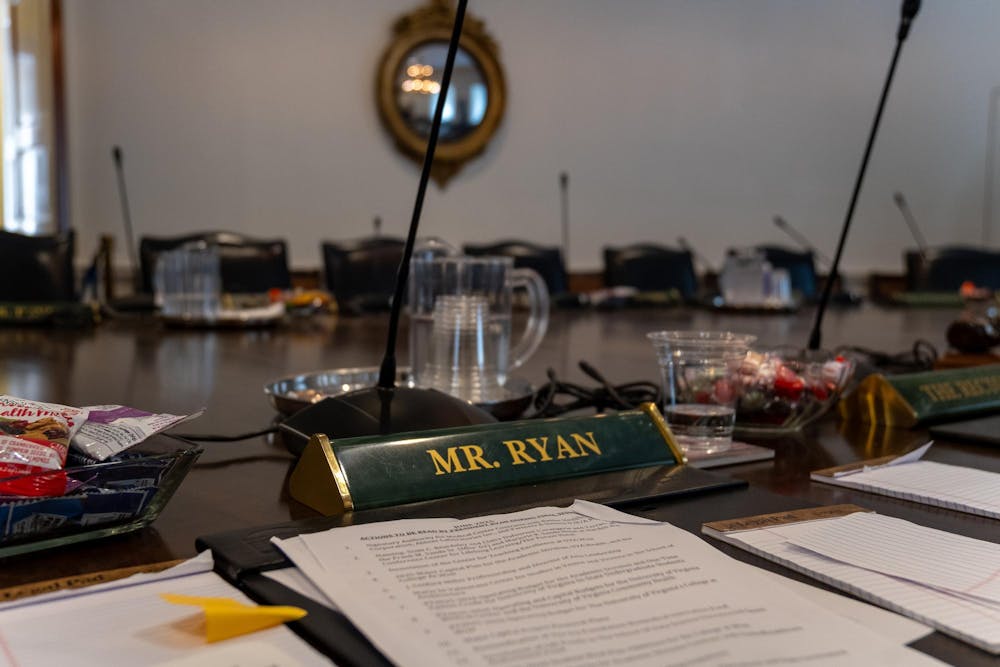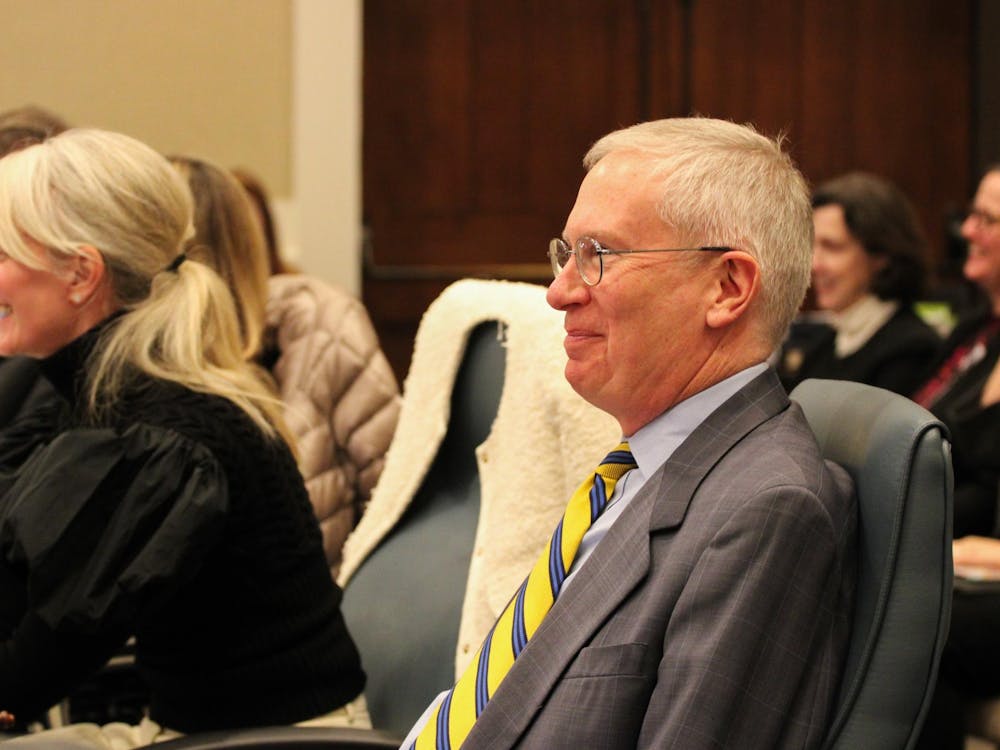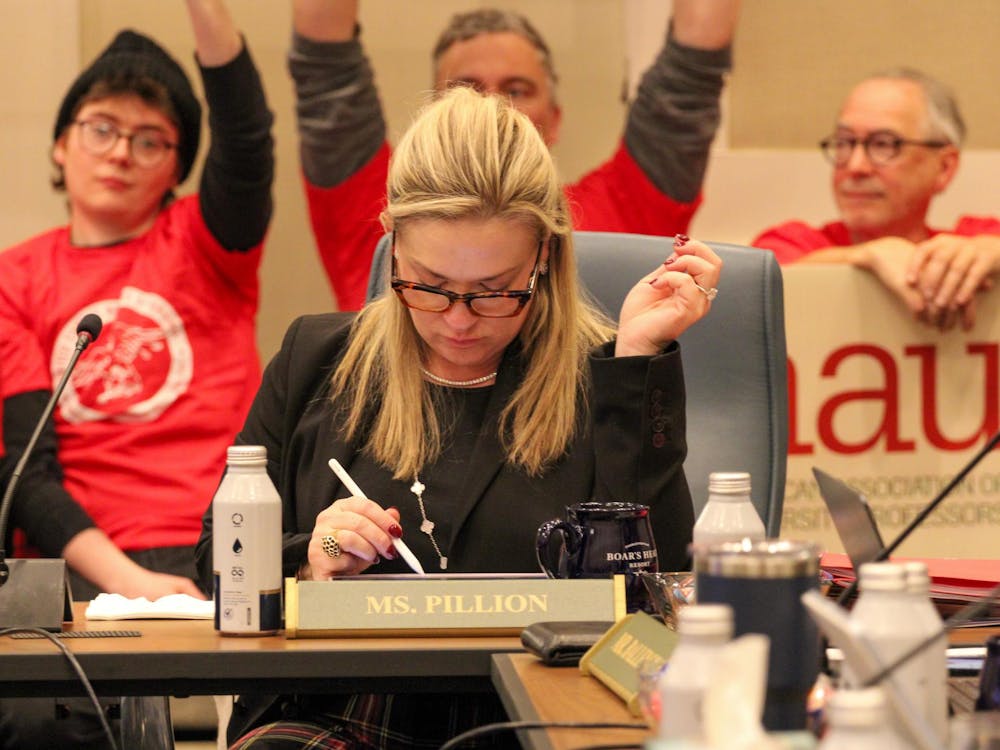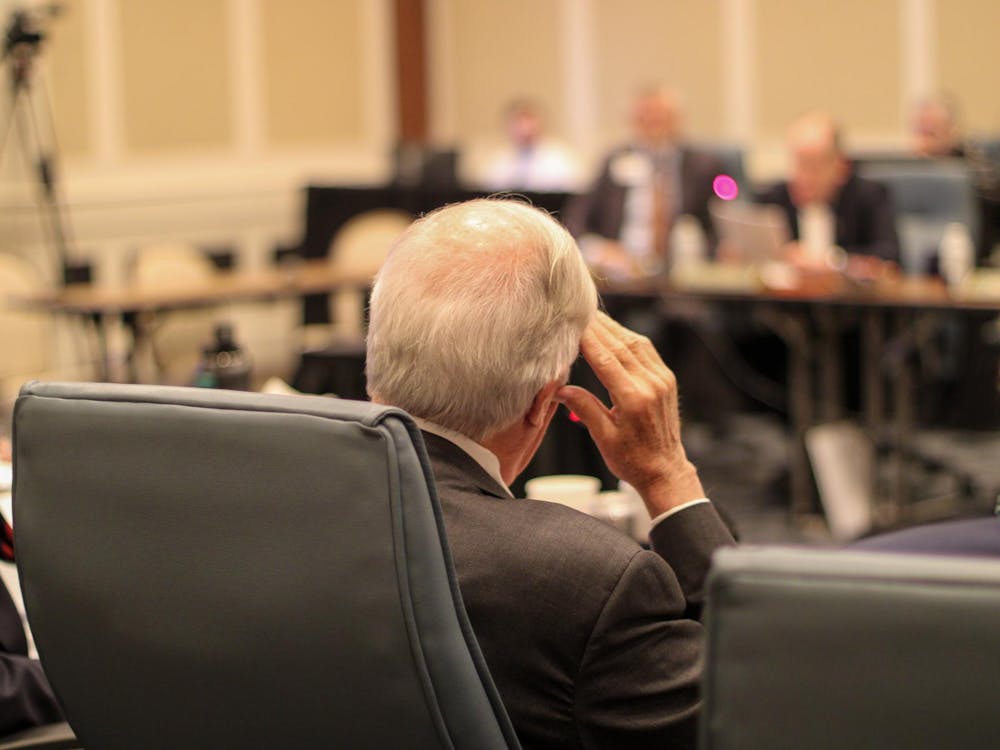As the University approaches its decennial 2027 reaffirmation of reaccreditation, some groups have issued votes of no confidence in the Board of Visitors for what they see as a failure to protect the University from outside influence, specifically as this influence relates to former University President Jim Ryan’s resignation. Considering that protection from “undue external influence” is a standard the University must uphold to be reaccredited, will Ryan’s resignation threaten the University’s status as an accredited institution?
At this point, the University and the Southern Association of Colleges and Schools Commission on Colleges, the agency that provides accreditation, say that the University’s accreditation will not be affected.
According to University spokesperson Bethanie Glover, the University has not received any non-compliance concerns from SACSCOC related to Ryan’s resignation as of Aug. 7. In a written statement to The Cavalier Daily, Glover also shared that the University consistently notifies SACSCOC of any leadership changes.
Dr. Janea Johnson, public relations and data specialist at SACSCOC, said in a written statement to The Cavalier Daily July 28 that “a change in leadership does not automatically become a compliance concern.” The agency has not issued any public statements about the University’s upcoming reaccreditation.
Universities go through regular accreditation processes with independent agencies — such as SACSCOC — to remain recognized as institutions that provide legitimate educational experiences to their students. If accredited, institutions are authorized to provide recognizable degrees and can qualify for federal aid and research funding.
As it prepares to submit for reaccreditation next year, the University must continue to adhere to all 73 compliance standards set forth by the SACSCOC, one of which states that university governing boards must prevent “undue influence” on their institutions by external forces.
According to SACSCOC’s language, any judgement on the University’s compliance with this standard will depend on SACSCOC’s interpretation of whether pressure from the Department of Justice surrounding Ryan’s resignation can be considered an instance of “unreasonable intrusion” by an outside agency.
SACSCOC’s manual does note that in some cases, external influence can be considered appropriate when coming from elected officials, corporate offices, alumni associations, donors or religious denominational bodies who have vested interests in the institution. The SACSCOC has not yet indicated whether it would consider inquiries from the Justice Department into the University’s compliance with federal law to be “appropriate” in scope.
The University has experienced difficulties with reaccreditation in the past. In 2012, following the forced resignation of former University President Teresa Sullivan, SACSCOC issued a warning to the University for one year, saying that it had violated two of the agency’s standards. Specifically, the SACSCOC said that a minority of Board members had controlled the University’s affairs and that there was not a clearly established policy for the faculty’s role in the University’s governance.
By placing the University’s accreditation status on warning, the University did not lose its qualifications for federal aid and research funding. Instead, it meant that the University would participate in a “monitoring period” with SACSCOC in which the University had a maximum of two years to resolve its violations of non-compliance and had to submit periodic reports to SACSCOC detailing their progress towards resolving these violations.
According to SACSCOC, institutions may be placed on either “warning” or “probation” during their two-year monitoring periods. If institutions are unable to fulfill their obligations of maintaining compliance with all of SACSCOC’s standards or providing “Good Cause” regarding why they should remain accredited, their membership as an accredited institution may be revoked.
Several groups have issued statements of no confidence in the Board, using language which implicitly alleges that the University violated this standard. In July, the University’s Faculty Senate expressed that the Board did not adequately protect the University from outside interference of the Justice Department.
Faculty Senate Chair Jeri Seidman said that the University’s renewal of accreditation in 2027 may be jeopardized if SACSCOC also adopts the interpretation that the Board did not adequately protect the University from external influence during Ryan’s resignation.
She did note, however, that it is difficult to compare Sullivan’s resignation to Ryan’s resignation, thus, it is difficult to know whether or not SACSCOC will interpret the Board’s actions across Ryan’s resignation as a violation of its standards.
“In both situations, the faculty and even part of the administration were not kept apprised of what was happening,” said Seidman. “This one is more complicated in that there's also more outside influences, and that it seems that the full Board was not kept apprised of the situation,” Seidman said.
The University chapter of the American Association of University Professors sent a letter to the Board and University leadership Aug. 3, which expressed similar concerns regarding ongoing negotiations with the Justice Department. The letter encouraged the University not to cede control over internal decisions to outside bodies.
“In pursuing settlements of pending legal cases or compliance agreements, we expect that U.Va.’s leaders will act to protect what must be the highest value of any research university: academic freedom,” the letter read.
Student Council also passed a resolution Friday which declared no confidence in the Board, in part due to its failure to protect the University from the Justice Department’s influence.
“The Board of Visitors violated their statement of visitor responsibilities by failing to protect the University from outside interference from the Federal Government and Department of Justice subsequently leading to resignation of President James Ryan under circumstances that pose an ongoing threat to academic freedom, free speech and independent governance,” the resolution read.
Not only have members of the Faculty Senate and Student Council expressed concern related to the Board’s protection of the University’s best interests during Ryan’s resignation, but the State Council of Higher Education for Virginia has also spoken on the importance of fair governance and oversight across Virginia’s university boards.
SCHEV issued a press release July 15 which did not specifically address Ryan’s resignation, but said that “recent events” at several universities across the commonwealth had prompted them to reemphasize Board member participation in their training and orientation programs that promote strong, streamlined Board governance.
Such training sessions held by SCHEV are required within the first two years of service and provide Board members with the tools needed to ensure their institutions consistently comply with federal and state legislation. The press release encouraged all members to attend these sessions, regardless of how long they have held their positions.
There are three key questions that SACSCOC will consider when making this judgment of compliance regarding Standard 4.2.f. The first question revolves around what actions the institution’s governing board took in the case of undue external influence. The second and third question considers to what extent board members are understand their responsibilities to protect their institutions from undue external influence, as well as what safeguards an institution has in place to prevent such influence.
Though Ryan and the Board made efforts to comply with federal law — such as dissolving the Office of DEI and Community Partnerships March 7 — it is unclear whether or not the Board took action to protect the University from what may or may not be interpreted as “undue” external influence from the Justice Department.
According to Glover, planning has commenced for the University’s decennial reaffirmation of accreditation in 2027. The University will submit an initial certification of compliance to SACSCOC in September 2026.







